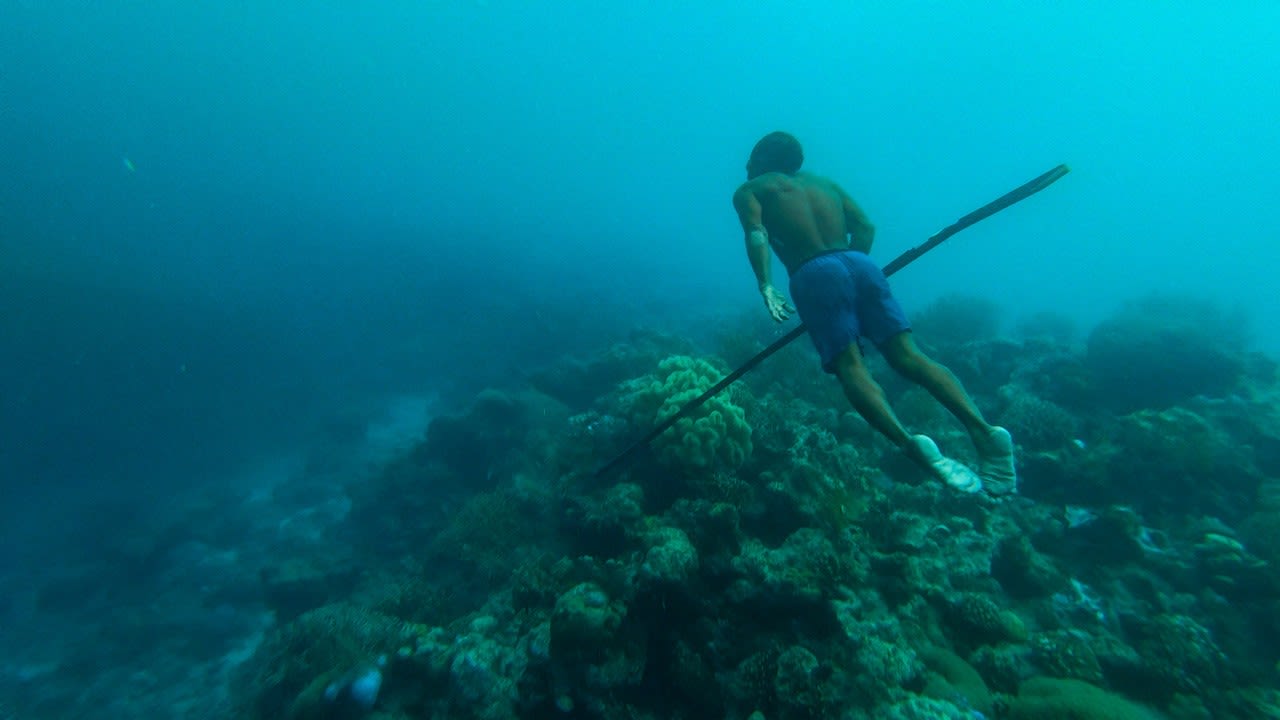First cross-cultural analysis of hunter-gatherer locomotion sheds light on human ability to adapt to almost every environment on Earth

Upright walking and running have dominated the human locomotor repertoire for at least a million years, with the development of our species’ bipedal morphology typically considered indicative of incompetence in other forms of locomotion. And yet, examples of hunter-gatherer societies that exhibit remarkable feats of tree-climbing and diving are well known, even celebrated in mainstream media.
Examining over 900 documents across 57 societies worldwide, a new study by Cambridge researchers represents the first systematic cross-cultural analysis of hunter-gatherer locomotion, seeking to examine the extent to which locomotor versatility—the ability to not only walk and run, but also climb, swim and dive—is present among hunter-gatherer worldwide, rather than restricted to a few unique specialists.
George Brill, Dr Mark Dyble and Prof Marta Mirazón Lahr, all based in Cambridge's Department of Archaeology, found that diverse locomotor proficiency is widespread among hunter-gatherer societies, with each running, climbing, swimming and diving documented in societies across a broad range of environments and temperature ranges, often to high levels of proficiency.
Each modality was employed for a variety of reasons, ranging from the acquisition of food and other resources to leisure, children’s play, travel, ritual, warfare and protection, with engagement typically present in both male and female individuals; only a minority of societies exhibited clear biases towards male engagement.
Generally, it appears that locomotor versatility is the rule rather than the exception in hunter-gatherers, with the capacity not only to run and walk, but also to climb, dive and swim likely representing a central component of our species’ adeptness at exploiting almost every environment on earth.
Batek, Peninsular Malaysia | Image credit: George Brill
Batek, Peninsular Malaysia | Image credit: George Brill
Batek, Peninsular Malaysia | Image credit: George Brill
Batek, Peninsular Malaysia | Image credit: George Brill
Batek, Peninsular Malaysia | Image credit: George Brill
Batek, Peninsular Malaysia | Image credit: George Brill
Reference: George Brill, Mark Dyble and Marta Mirazón Lahr, 'Extensive locomotor versatility across a global sample of hunter–gatherer societies', Proceedings of the Royal Society B. (2024) DOI: https://doi.org/10.1098/rspb.2024.2553
This research was funded by The Cambridge Trust & King’s College, Cambridge
George Brill is a PhD student in Biological Anthropology researching human locomotor versatility, drawing on evidence from both hunter-gatherer societies and elite athletes to examine our species evolutionary capacity for high levels of locomotor performance across each walking, running, climbing, swimming and diving. George is supervised by Dr. Mark Dyble and Professor Marta Mirazón Lahr.

Published 4 December 2024
The text in this work is licensed under a Creative Commons Attribution 4.0 International License





